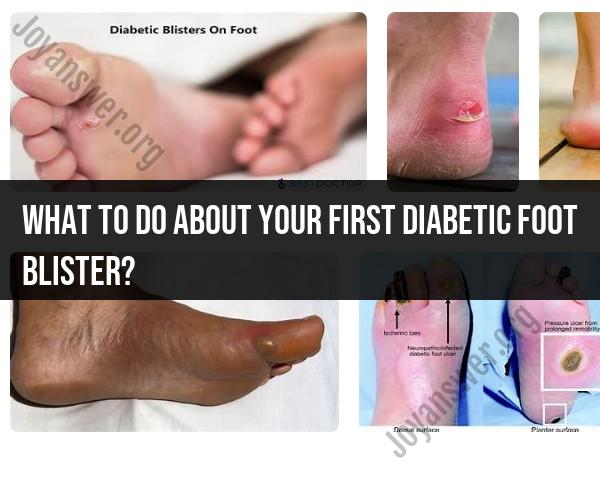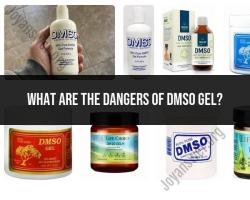What to do about your first diabetic foot blister?
If you have diabetes and notice your first foot blister, it's essential to take prompt and appropriate action to prevent potential complications. Here are some tips and guidelines for dealing with your first diabetic foot blister:
Do Not Pop the Blister:
- It's crucial not to pop the blister, as breaking the skin can lead to infection, which is a significant concern for individuals with diabetes.
Keep the Blister Clean:
- Wash your feet gently with mild soap and lukewarm water. Avoid harsh scrubbing or hot water, as this can damage the fragile skin.
Apply an Antiseptic:
- After cleaning the area, apply an antiseptic (like hydrogen peroxide or an over-the-counter antibiotic ointment) to the blister and the surrounding skin to reduce the risk of infection.
Cover the Blister:
- Protect the blister by covering it with a sterile, non-stick bandage or dressing. This helps keep the area clean and minimizes friction.
Wear Appropriate Footwear:
- Opt for well-fitting, breathable, and cushioned footwear. Avoid wearing tight or pointed-toe shoes that could cause pressure and friction on the blister.
Avoid Barefoot Walking:
- Refrain from walking barefoot, even at home. Diabetic neuropathy can make it difficult to feel injuries, and a simple blister can escalate into a more serious problem if left untreated.
Monitor for Signs of Infection:
- Keep a close eye on the blister for any signs of infection, such as redness, increased pain, warmth, swelling, or the presence of pus. If you notice these signs, consult a healthcare professional immediately.
Do Not Use Heating Pads or Hot Water:
- Refrain from using heating pads, hot water bottles, or heating lamps to treat your blister. Diabetes can affect your ability to sense temperature, making you susceptible to burns.
Avoid Salicylic Acid or Corn/Callus Removers:
- Do not use over-the-counter products containing salicylic acid or corn/callus removers on your blister. These products can be too harsh and may damage your skin.
Seek Medical Attention:
- If you notice that the blister is not healing, is getting larger, or if you develop signs of infection, contact a healthcare professional, such as a podiatrist or diabetes specialist, for guidance.
Maintain Good Blood Sugar Control:
- Keep your blood sugar levels well-managed. High blood sugar can slow down the body's natural healing processes.
Practice Daily Foot Care:
- Incorporate daily foot inspections into your routine to monitor for any changes or new issues. This proactive approach can help catch problems early.
Consult Your Healthcare Team:
- If you have any concerns or questions about foot care, always consult your healthcare team, which may include a podiatrist, diabetes educator, or primary care physician.
Remember that even a seemingly minor issue like a blister can lead to serious complications in individuals with diabetes. Timely and proper care is essential. Regular foot examinations by a healthcare professional are also recommended to prevent issues from escalating.
First Diabetic Foot Blister: Steps to Take
If you develop a blister on your foot, it is important to take steps immediately to prevent complications. Here is a step-by-step guide:
- Clean the area around the blister with mild soap and water.
- Apply a thin layer of antibiotic ointment to the blister.
- Cover the blister with a sterile bandage.
- Avoid popping the blister.
- Monitor the blister for signs of infection, such as redness, swelling, or heat.
Immediate Response to a Diabetic Foot Blister
If you notice a blister on your foot, it is important to take action immediately. Here are some tips:
- Clean the area around the blister with mild soap and water. This will help to prevent infection.
- Avoid popping the blister. Popping a blister can increase the risk of infection.
- Cover the blister with a sterile bandage. This will help to protect the blister and prevent it from popping.
- Wear loose-fitting shoes and socks. This will help to reduce friction and pressure on the blister.
- Elevate your foot when possible. This will help to reduce swelling.
Caring for Diabetic Foot Blisters: Dos and Don'ts
Here are some dos and don'ts for caring for diabetic foot blisters:
Do:
- Clean the area around the blister with mild soap and water.
- Apply a thin layer of antibiotic ointment to the blister.
- Cover the blister with a sterile bandage.
- Wear loose-fitting shoes and socks.
- Elevate your foot when possible.
Don't:
- Don't pop the blister.
- Don't pick at the blister.
- Don't use rubbing alcohol or hydrogen peroxide on the blister.
- Don't wear tight-fitting shoes or socks.
- Don't walk on the blister if it is painful.
Preventing Complications with Timely Treatment
Diabetic foot blisters can lead to serious complications, such as infection and gangrene. It is important to seek treatment for a diabetic foot blister as soon as possible.
Seeking Professional Guidance for Foot Blisters
If you have a diabetic foot blister, it is important to see a doctor or podiatrist. They can assess the blister and provide treatment recommendations. They may also prescribe antibiotics if the blister is infected.
Here are some situations where you should seek professional guidance for a diabetic foot blister:
- The blister is large or painful.
- The blister is red, swollen, or warm.
- The blister is draining pus.
- You have other medical conditions, such as diabetes or neuropathy.
By following these tips, you can help to prevent and treat diabetic foot blisters and prevent complications.













